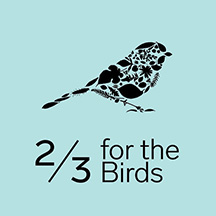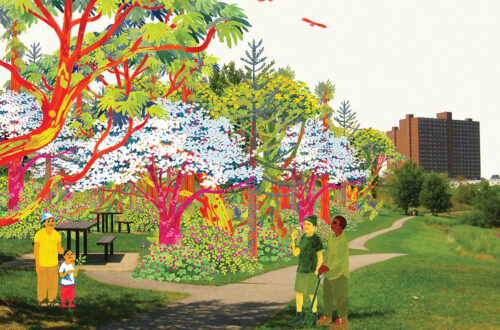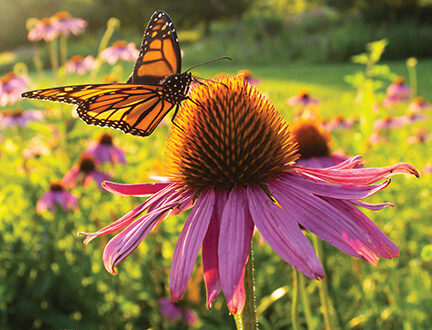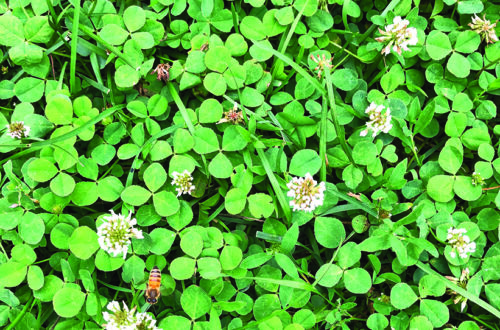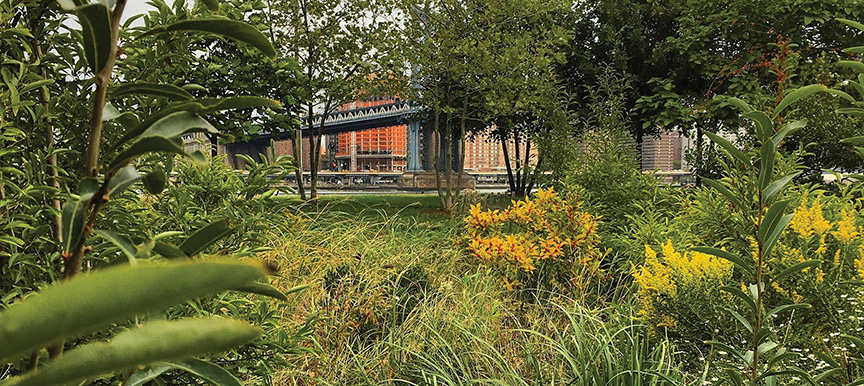
Brooklyn Bridge Park, a native ecosystem making people and pollinators happy in the city.
By Will Rowlands
We’ve been promoting native plants ever since we took over Connecticut Gardener magazine in 2010. The reason for this is fairly simple … biodiversity is a good thing. It’s not only better for birds, pollinators and insects, it also creates a more resilient ecosystem.
A yard with a large lawn and some boxwoods doesn’t do anybody any good, ecologically speaking, especially if you’re using chemicals to maintain the property. It’s essentially an ecological wasteland at a time when populations of birds, pollinators, insects and native plants are all declining.
We’re excited to see that native plants have finally begun to get some traction in the last few years. That’s very good news indeed.
Even though we’re longtime proponents of native plants, we sometimes catch flack when we mention non-native plants. Hostas for example. Some people take exception and tell us that we should only talk about native plants.
Anyone is, of course, welcome to go 100 percent native if they’re so inclined. If that’s your thing, by all means go for it.
For our part, we’ve been following Dr. Doug Tallamy’s lead in this regard. He recommends that people have at least 70 percent native plants. Check out homegrownnationalpark.org for more information.
That’s great for me because I like to indulge my interest in other plants that aren’t necessarily native to New England. In particular, I have a some geneologically tinged horticultural interests. I became an aficionado of daphnes, for example, after getting a Daphne ‘Carol Mackie’ from John O’Brien at O’Brien Nursery in Granby. It was named after the owner of the garden where it was found in New Jersey. My middle name (and my mom’s maiden name) is Mackie so I checked it out.
More recently I got interested in Kerria japonica because it’s named after William Kerr and I have Kerrs in my family tree. Kerr was a Scottish gardener who was reportedly the first professional full-time plant hunter active in the Far East. He collected plants in China and elsewhere for Kew Gardens. You get the general idea.
I also like dahlias and peonies because, well, they’re dahlias and peonies! I like a lot of plants (including hostas) and I’m happy that Doug Tallamy’s 70 percent native philosophy allows me the leeway to indulge these interests.
I do draw the line when it comes to invasive plants. I volunteered for a few years for the Connecticut Invasive Plant Working Group (cipwg.uconn.edu) and have been writing pieces aimed at informing readers about invasive plants for years. So no invasive plants allowed!
With that as a preamble, I was interested to learn about Edwina von Gal’s 234birds initiative. It’s similar to Doug Tallamy’s Homegrown National Park but, while Tallamy is recommending 70 percent native plants, the motto of 234birds is “Two Thirds for the Birds.” They’re both proponents of the same thing but 234birds makes it a no-brainer. If you drive home with three plants from your local independent garden center, two of them should be natives. That’s dirt simple.
Why You Should Care
We’ve been losing birds, pollinators and insects for decades. Remember when you were a kid and car windshields were covered with dead insects? Doesn’t happen any more, does it?
Bird populations have declined 29 percent since 1970. That’s almost 3 billion birds across North America, or more than one out of every four birds.
The situation with insects isn’t any better. Terrestrial insects are declining at about 9 percent a year and it’s estimated that 40 percent of insect species may soon be threatened with extinction.
The major reasons for this decline in populations is loss of habitat and our extensive use of pesticides.
Habitat can be thought of as food, water and shelter. If your yard isn’t providing those things then you’re part of the problem, not part of the solution.
Food is more complicated than you might think. To be truly supportive of wildlife, our yards need to provide the right type of food at the right time of year. Native plants are good at this because they co-evolved with the local fauna.
As more and more native habitat is taken over by housing developments, industrial parks and parking lots, we need to replace what we’ve taken away by providing support for birds and pollinators.
Shelter is also more complex than you might think. When we create nice, clean, manicured yards we’re not helping wildlife. There’s no place for nesting, pupating and hiding. There’s simply no place for living.
Stop Using Poisons
Americans use millions of pounds of pesticides every year. Amazingly, homeowners use them at a higher rate than farmers and growers. To save money, businesses only use what they need. A lot of homeowners, unfortunately, have adopted a “more is better” philosophy.
All these chemicals – pesticides, insecticides, fungicides, herbicides, bactericides, rodenticides et al – anything that ends in “cide” is meant to kill things. Depending on the product and the knowledge and expertise of the applicator, you may be killing a lot more than you originally intended.
If you kill the bees, plants may not be pollinated. If you kill insects the birds won’t be able to feed the next generation. If you won’t stop using poisons for the birds and pollinators, do it for your children, grandchildren, and pets.
Don’t even get me started about what’s going on with our soil. The mycorrhizals (biologics) are getting slaughtered.
Go Electric
The world is going electric because our dependence on finite fossil fuels is becoming an albatross of biblical proportions.
And it’s not just cars … mowers, blowers, chain saws, pretty much everything is available in battery-powered versions these days.
While you’re at it … get rid of your roto-tiller if you have one. They destroy the soil biome.
And, just in case you didn’t realize, residential gas-powered equipment is a contributor to pollution, greenhouse gases and climate change.
About 234BIRDS
“We are nature lovers everywhere. We have no specific organization or leader – we hope everyone who makes the commitment will be a leader in their own way and will ask everyone in their organization to join them. Two Thirds for the Birds is an idea, a community, and a limitless possibility. We, and the birds, are counting on you and your love of nature to make it fly. Far and wide.”
Two Thirds for The Birds was originated by Edwina von Gal and the Perfect Earth Project as something the eco-stressed population can do to make a difference and feel better, too. It is, in particular, a call to action to the landscape design professional community to design ONLY earth positive landscapes from this moment on. You can find out more about and add your name to the list at www.234birds.org
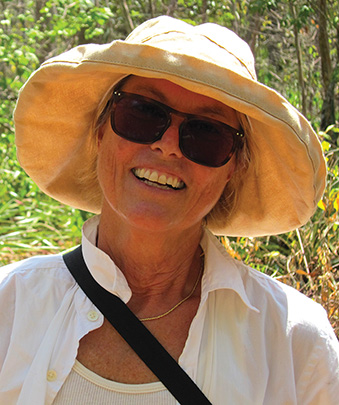
Fundamentals of Two Thirds
The two largest drivers of the bird decline are loss of habitat and the use of pesticides. There are three simple things you can do:
1 – Plant two native plants for every three
2 – Remove invasives
3 – Stop using pesticides
The Ten Commitments
For those who feel more strongly:
• I will embrace this place as my partner. I will get to know what it really needs, and all that it offers.
• I will do this place no harm, I will use no toxic fertilizers or pesticides.
• I will use nature-based practices to support the health of my landscape.
• I will keep and compost all the biomass (leaves and twigs and grass) that grows here. This is the food my place made for itself.
• I will not kill insects until I know their names and understand if it is really necessary and how to do it without killing innocent bystanders.
• I will reduce the size of my lawn to just what gets used.
• I will plant two-thirds native plants to provide food and shelter for song birds.
• I will get to know the names of my plants and birds and bugs and include them as family and friends.
• I will carefully consider everything I bring here – will it be useful for a very long time? Can it be composted or repurposed? Does it really need to be plastic?
• I will keep thinking of more ways to make this relationship fun, interesting and rewarding. I will be faithful, through pestilence and abundance, through sun and storm, through downpours and droughts, I will take care of my place and all the wonders it provides, so that we all shall live.
